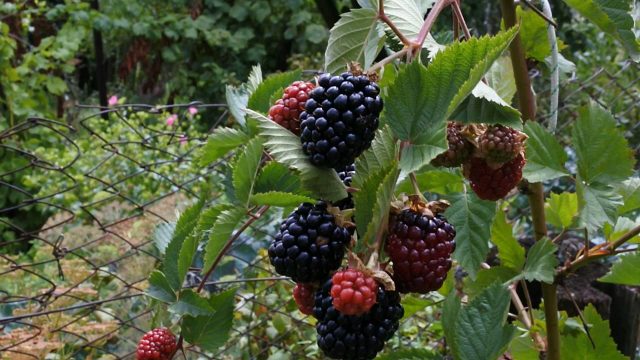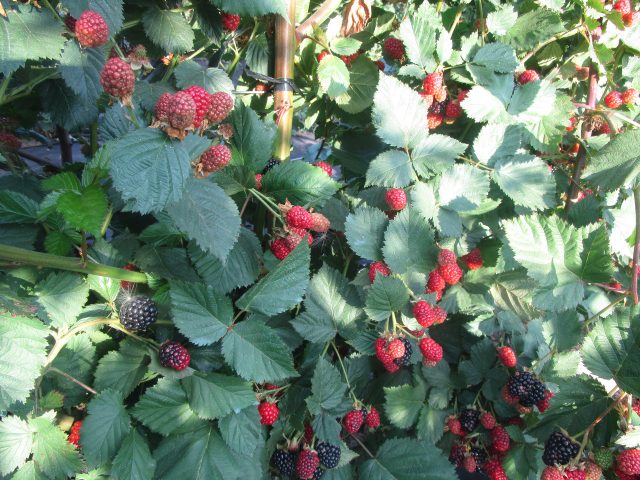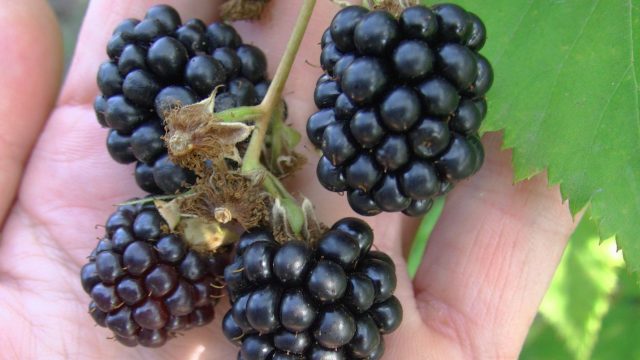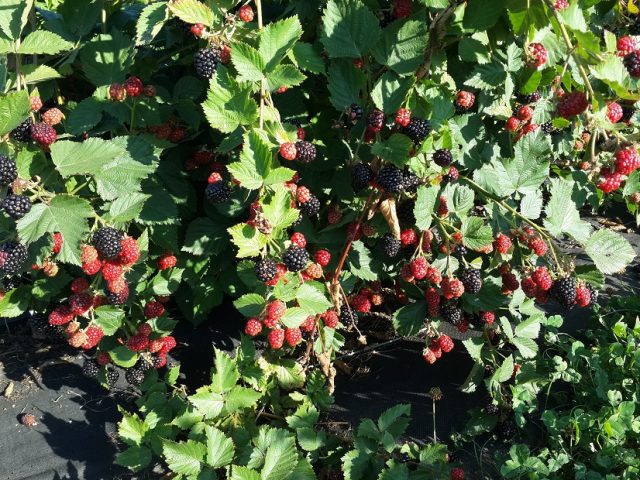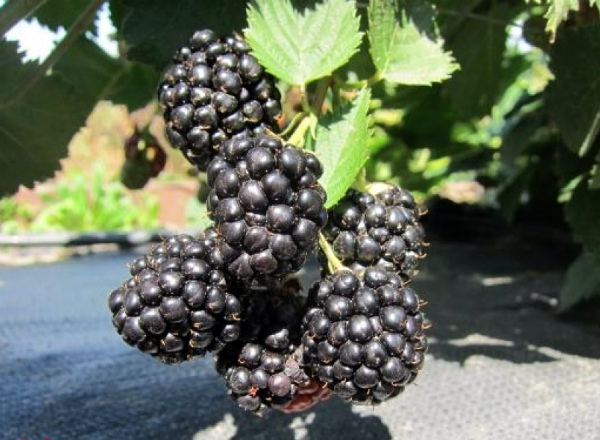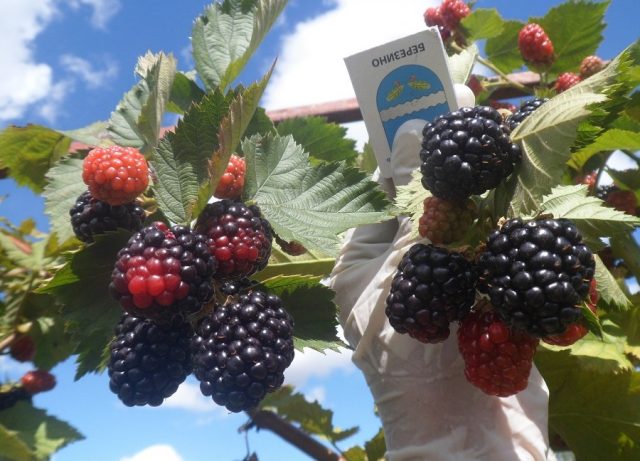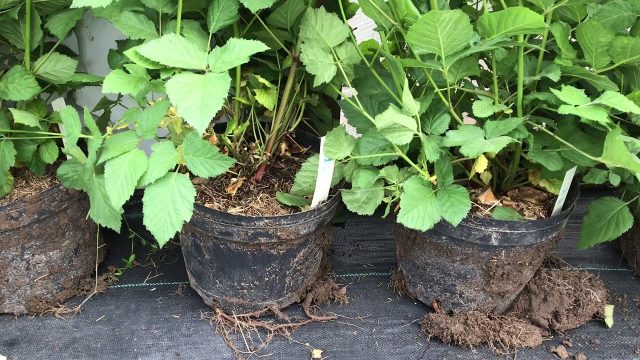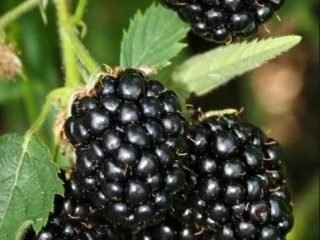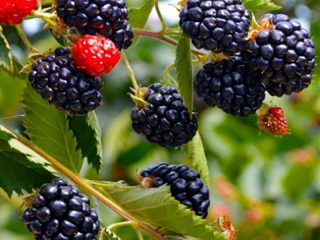Content
In recent years, blackberries have become a popular culture in the post-Soviet space. Unfortunately, domestic breeders have hopelessly lagged behind American ones - most of the interesting new products come to us from overseas. One of the best varieties for more than 20 years has been the Triple Crown blackberry. You may know it as the Triple Crown or Triple Crown.
Breeding history
The Triple Crown Blackberry was created in 1996 by the joint efforts of the Northeast Area Research Center (Beltsville, Maryland) and the Pacific West Agricultural Research Station (Portland, Oregon). The maternal varieties were Black Magic and Columbia Star.
The Triple Crown Blackberry was tested in Oregon for 8 years before it went on sale.
Description of berry culture
Blackberry Triple Crown was and remains one of the best dessert varieties. We grow it in private farms, but for America it is an industrial variety. There, in blackberries intended for fresh consumption, the main thing is taste, not yield.
General understanding of the variety
The bushy Triple Crown blackberry forms a powerful shrub with semi-creeping shoots. Already in the first year after planting, the lashes grow up to 2 m, later, without pinching, they reach 3 m. Thorns are absent along the entire length of the shoot.
The leaves of the Triple Crown blackberry are difficult to confuse with another variety - they are similar in shape and density to black currants. Shoot-forming ability is good. The root system is powerful. Flowers and berries are formed on the growth of the previous year.
Berries
The berries of the Triple Crown are large, with an average weight of 7-9 g, collected in a cluster. Their shape can be round, slightly elongated or oval, the color is black, with a characteristic glossy sheen. According to gardeners' reviews about Triple Crown blackberries, the fruits of the last harvest are as large as the first berries. Drupes are small.
The berries are sweet, with a plum or cherry aroma and a pleasant sour note. Fruit tasting and reviews about blackberry The Triple Crown of domestic connoisseurs is the same - 4.8 points.
Characteristic
The characteristics of the blackberry variety Triple Crown (Triple Crown) are reliable, as they have been tested by time. Twenty years is a long time, you can check the yield in different conditions, and the reaction to weather disasters.
If in America Triple Crown blackberries are grown mainly on industrial plantations, then here they have mostly won the hearts of amateur gardeners and small farmers. It's all about priorities. The yield at Triple Crown is average, although sufficient for a dessert culture. And in Russia and neighboring countries, the main thing for large farms is abundant fruiting. In the United States, they pay attention to taste - there consumers are spoiled by a variety of varieties of blackberries and they will not eat sour or bitter berries just because they are healthy.
Main advantages
When describing the Triple Crown blackberry variety, the main emphasis is on excellent taste, high transportability of berries and the absence of thorns. But in America, where the industrial cultivation of this crop is carried out, the climate is mild, and the winters are warm. Therefore, other characteristics are of great importance to us.
Winter hardiness of Triple Crown blackberry is low. It is necessary to shelter it even in the central and some southern regions of Ukraine. In Russia, especially in the Middle Lane, without insulation for the winter, the bush will simply die.
But the resistance to heat and drought in the Triple Crown variety is at an altitude. Berries are not baked in summer, with sufficient watering they do not become shallow. Moreover, the variety needs to be shaded only in the hottest summer with active sun.
The demand for soil fertility in the Triple Crown blackberry is increased. The variety is not very picky in care, but there are some nuances when growing, which must be taken into account if you want to get a decent harvest.
Yield indicators, fruiting dates
Fruiting of Triple Crown blackberries, depending on the region, begins in late July or early August and lasts a month or more. This is considered to be the mid-late ripening period of the berries.
For cold climates, the Triple Crown variety is very controversial. Late flowering allows you to get away from recurrent frosts, but fruiting extended until September may prevent gardeners from collecting 10-15% of the berries.
The yield of the Triple Crown is about 13 kg of berries from an adult bush. Perhaps it will seem a little to some, but only against the background of technical varieties. Among the elite blackberries, the most productive is Triple Crown.
Scope of berries
Blackberry Triple Crown belongs to dessert varieties. It is eaten fresh, the berries are well stored in a cool room and are transported without loss. Juices, wines, preparations and freezing for the winter, berry desserts and pastries - all this can be made from the fruits of the Triple Crown.
Disease and pest resistance
The Triple Crown blackberry variety is resistant to diseases, rarely affected by pests. This does not cancel preventive treatments, especially with thickened plantings on industrial plantations.
Advantages and disadvantages
Blackberry Triple Crown is both a dessert variety and is grown on an industrial scale. For more than 20 years in the United States, it has been considered one of the best varieties. The undoubted advantages include:
- Beautiful large berries.
- Good taste.
- High (for dessert variety) yield.
- Lack of thorns.
- Excellent transportability of berries.
- High resistance to heat and drought.
- The possibility of a tight fit.
- High resistance to diseases and pests.
- Berries of the last collection are almost the same in size from the first ones.
Among the disadvantages of the Triple Crown variety are:
- Low frost resistance.
- Average yield.
- Powerful shoots make it difficult to shelter for the winter.
- Late fruiting.
- In the northern regions, not all berries have time to ripen before frost.
- When sparsely planted in the southern regions, the variety still suffers from the heat.
Reproduction methods
Propagation of Triple Crown blackberries is easy by rooting apical cuttings. True, the chosen shoot will have to be tilted to the surface of the earth as it grows back - adult lashes are reluctant to bend.
A good variety is bred using root cuttings - green ones take root worse. You can split up an adult blackberry bush.
Landing rules
Planting and caring for Triple Crown blackberries in spring and throughout the season is little different from other varieties.
Recommended timing
In the southern regions, it is recommended to plant blackberries in the fall, at least a month before the first frost. Better yet, start excavating as soon as the heat subsides. Usually the right time is late September - early October. In the central regions of Ukraine and in the south of Russia, planting can be done until early November.
In other regions, spring planting is recommended. During the warm season, blackberries will have time to take root and survive the harsh winter safely.
Choosing the right place
In the middle lane and colder regions, the Triple Crown blackberry is planted in a sunny place protected from the cold wind. In the south, you can choose a slightly shaded area of the garden. Groundwater should be located no closer than 1-1.5 m from the surface.
Blackberry Triple Crown is more demanding for soils than other varieties, especially when planting thickened.
Soil preparation
A hole is dug with a diameter and depth of 50 cm. A fertile mixture for planting must be prepared - the top layer of the earth, a bucket of humus, 50 g of potash fertilizer and 120-150 of phosphorus fertilizer are mixed. Sour peat is added to alkaline or neutral soil. Carbonate soil is improved by additional introduction of humus, clay soil - with sand. Lime is added to the acidic earth.
The planting hole is covered with fertile soil by 2/3, filled with water and allowed to settle for 10-14 days.
Selection and preparation of seedlings
Seedlings are not worth buying from hands. This way you may end up with a completely different variety than you expect. It is better to purchase them in nurseries or proven retail chains.
The seedling should have a strong, flexible shoot with smooth, intact bark. In the Triple Crown variety, it is devoid of thorns. The root should be developed, flexible, smell of fresh earth.
Before planting, container blackberries are watered, and the open root system is soaked in water for 12 hours. To improve engraftment, heteroauxin or another stimulant can be added to the fluid.
Algorithm and scheme of landing
The Triple Crown blackberry planting scheme is calculated differently from other varieties. To obtain a larger yield, the bushes need to be placed at a short distance from each other - 1.2-1.5 m. At least 2.5 m are left in the row spacing. Industrial plantings are compacted even more.
Landing is carried out in the following sequence:
- In the center of the pit, a mound is formed, around which the roots of the blackberry are straightened.
- Fall asleep and compact the fertile mixture. The root collar should be 1.5-2 cm deep.
- The bush is watered with a bucket of water, the soil is mulched with sour peat.
Follow-up care of the culture
In regions with cold and temperate climates, after planting, spring care for the Triple Crown blackberry consists of regular watering twice a week. In the south, the variety is planted in the fall, if it rains frequently, additional moisture is not needed.
Growing principles
The yield of Triple Crown blackberries is influenced by the planting pattern and the garter. It has been noticed that fruiting increases if the bushes are located close to each other, and the shoots are attached to the trellis almost vertically. This is the difference between the Triple Crown and other varieties that prefer to grow freely and give a larger yield with an increase in the feeding area.
The trellis can be selected as multi-row or T-shaped. The optimal height is 1.8-2 m, it is simply not advisable anymore. Scourges are tied up almost vertically, fruiting last year - in one direction, young - in the other.
A decent harvest of Triple Crown blackberries can only be harvested with intensive feeding.
Necessary activities
Watering the Triple Crown variety is necessary in dry weather once every 1-2 weeks. The frequency of moistening depends on the ambient temperature and soil structure. Blackberries love water, but not root waterlogging. The rule applies to this culture: "If in doubt whether it is worth watering, water it."
The Triple Crown variety needs intensive feeding - with thickened plantings, the feeding area is small, and the load on the bush during fruiting is large:
- In early spring, the plant is given nitrogen.
- At the beginning of flowering, blackberries are fertilized with a full mineral complex.
- During the formation of berries, the bush is fed 2 times with a solution of mullein infusion (1:10) or herbs (1: 4).
- After fruiting, the blackberry is spilled with a solution of potassium monophosphate or other fertilizer of a similar effect.
- Throughout the season, once every 2 weeks, it is useful to spray the bush with foliar dressings, adding a chelate complex and epin or zircon to them.
In spring and autumn, the soil under the blackberry is loosened. During flowering and fruiting, the soil is mulched with sour peat or humus.
Shrub pruning
Immediately after fruiting, old shoots are cut into a ring close to the soil surface. In the spring, the lashes are rationed - 8-12 of the strongest are left. In order for the berries to be larger and ripen faster, the number of fruiting shoots should be reduced. So the harvest will be reduced, but its quality will increase.
Young shoots in the summer are pinched 1-2 times, when they reach 40-45 cm in length. Some gardeners don't do this at all. Try your best - everyone's conditions are different. Naturally, broken and weak shoots are cut out throughout the season.
Preparing for winter
In the fall, before the onset of frost, the lashes are removed from the trellis, bent to the ground and fixed with staples. The easiest way to deal with upright thick shoots is to make a tunnel shelter.
A blackberry shelter is built from spruce branches, straw, corn and Jerusalem artichoke stalks, agrofibre or spandbond, dry soil.
Diseases and pests: methods of control and prevention
Blackberry culture, in particular Triple Crown variety, is resistant to diseases and pests. But a thickened planting contributes to the spread of infection. It is imperative to spray the blackberry shoots with preparations containing copper before wintering and after removing the shelter.
Conclusion
The Triple Crown has been considered one of the best for over 20 years. It is not called a pearl for nothing - it is the most fruitful among the dessert blackberries. And beautiful black berries are not only large, but also really tasty.
